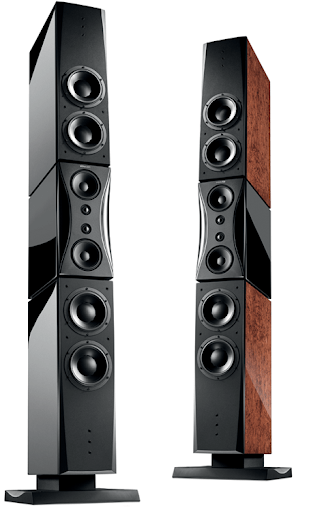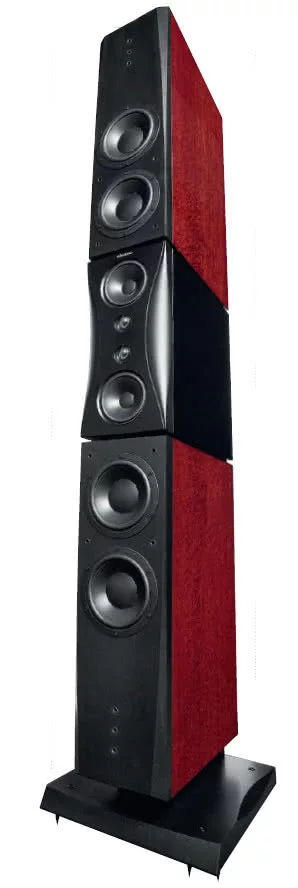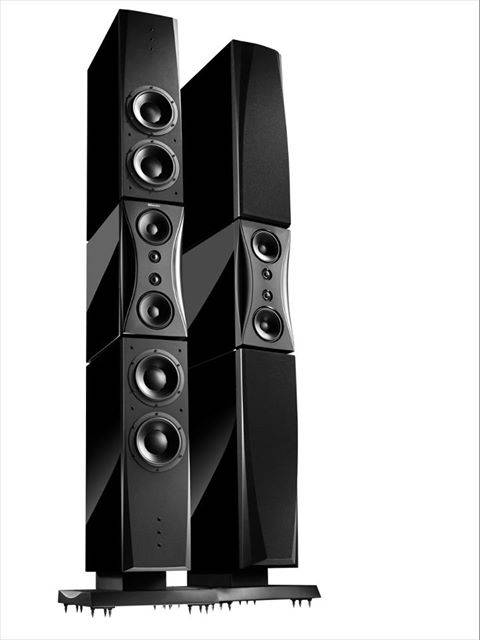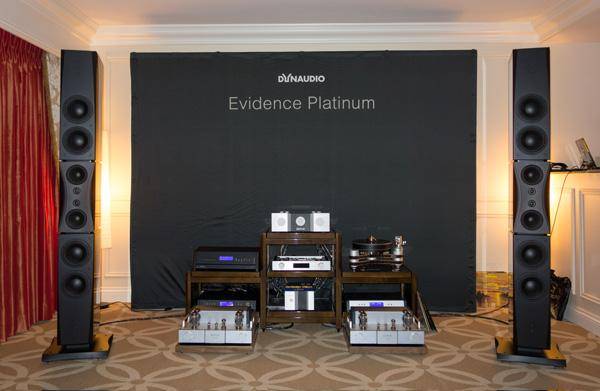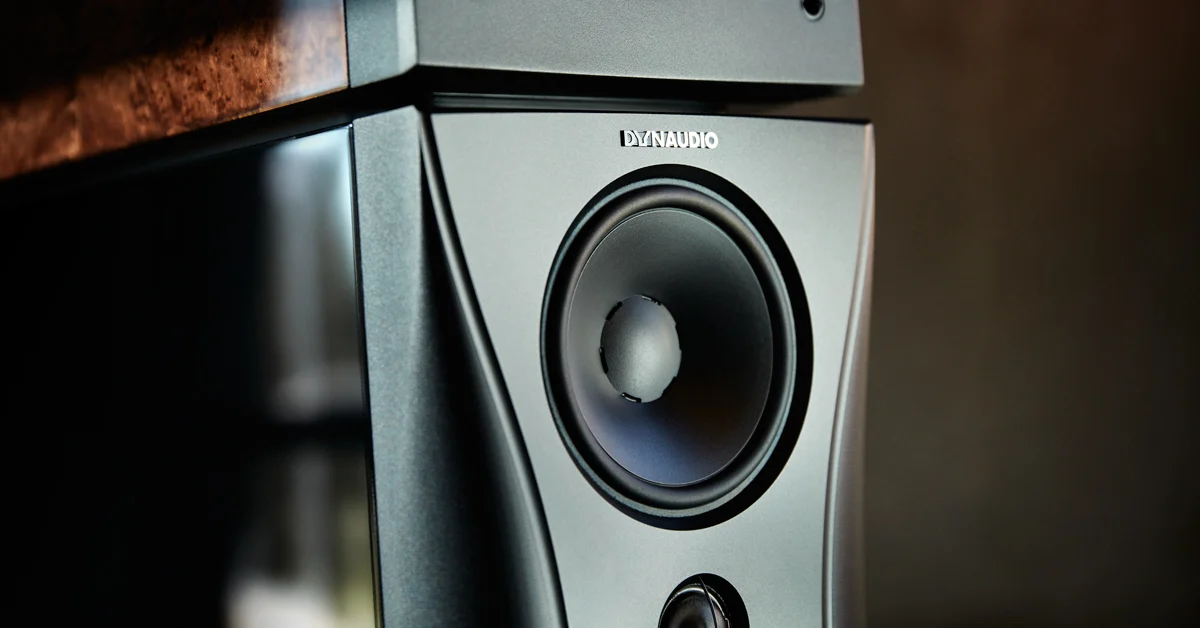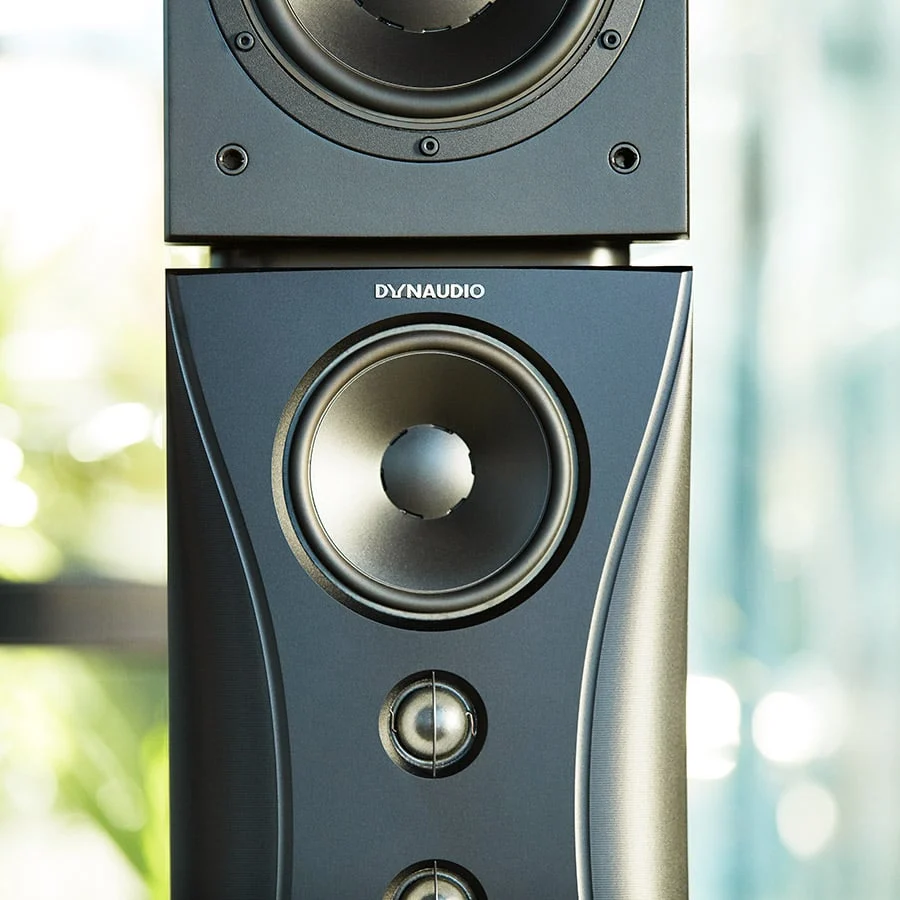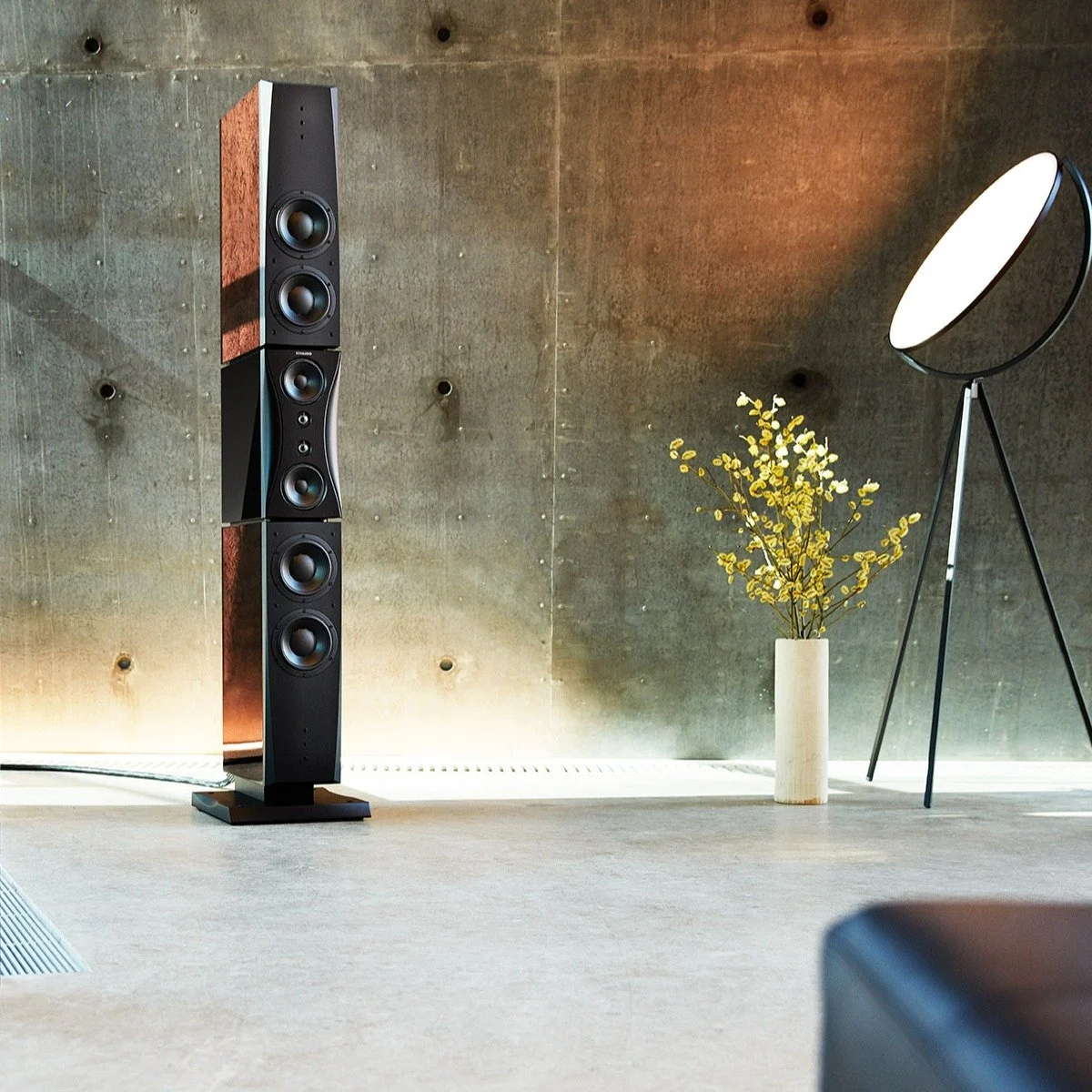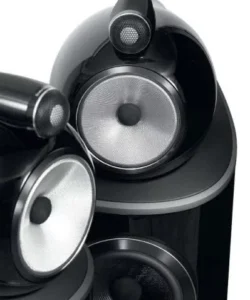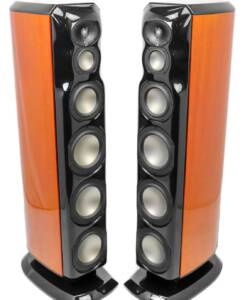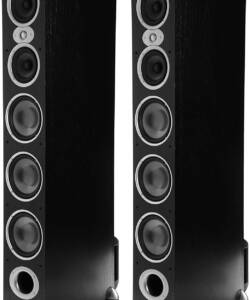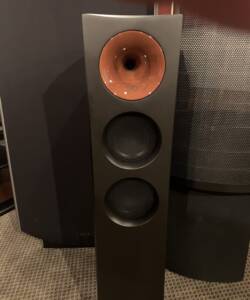Dynaudio Evidence Platinum Speakers
Original price was: R1,800,000.00.R540,000.00Current price is: R540,000.00.
Description

Planar loudspeakers have always held a particular allure for me. They tend to be big and deliver an equivalent sound. But it’s also the case that they are speedy, low in coloration, and, not to put too fine a point it, enchanting. But the downsides are obvious enough, and have, in my view, become more pronounced as cone-driver loudspeakers have improved considerably over the past decade. Superior cabinet construction and exotic driver technologies have combined to allow top manufacturers to banish many of the nettlesome drawbacks that used to be associated with big dynamic floorstanders.
Few loudspeakers drive this point home more vividly than Dynaudio’s new flagship, the Evidence Platinum. It aims to unite the best qualities of a planar—speed and transparency—with the slam and precision of a cone-driver loudspeaker. No, it doesn’t get all the way there. Hardcore planar addicts will probably never be satisfied with an alternative to their immortal beloveds, and more power to them. But the Platinum comes very close indeed, which is what makes it such a pleasure to audition. It needs a goodly number of watts to flourish, as well a fairly large room with a high ceiling. I ended up placing the Platinums somewhat closer together than my Wilson XLFs without shortchanging the size of the soundstage. Their height makes the Evidence Platinums look quite commanding despite their slim enclosures. With a stout amplifier like the Ypsilon SET-100 Ultimate backing them and a good acoustic space, these are loudspeakers that make you jump to attention as you realize what crisp, clean, and refined performers have landed in your listening space.
Dynaudio, which is based in Skanderborg, Denmark, is not a company that changes its lines with great frequency. Instead, it delivers a finished product and lets it, well, speak for itself.

The Evidence Platinum, which was introduced at the 2012 Munich high-end audio show, is likely the best loudspeaker the company has yet produced, which is saying something. It boasts a number of new technological features that allows it to surpass the performance of the company’s earlier Evidence Temptation and Evidence Master flagships. For a start, it boasts dual Esotar2 tweeters that are mounted on a solid aluminum baffle and possess, among other things, what the company calls “precision coating.” New 18W75 woofers have been developed to enhance bass performance and four of them are used in parallel (per speaker side) to increase the sense of precision and impact. Dynaudio adds that crossover components and internal cabling have also been upgraded, as has the plinth upon which the loudspeaker stands. There is no monkey business in this crossover, either. It presents a stable 4-ohm load to an amplifier.
Apart from these technological changes, it’s worth adding that the speakers simply look darned good. (The Evidence Platinum is available in black piano lacquer or four lacquered wood veneers. Custom finishes are also available by special order.) Tall and thin, the pair I reviewed came in a rosewood finish that blended in beautifully with my décor. As svelte as they may be, however, it requires a minimum of two people to situate them safely as they are quite heavy and unwieldy. Michael Manousselis of Dynaudio North America is a hefty guy, but he had injured his shoulder and was partially out of commission when the speakers arrived. So I carried one end of the loudspeaker (and he the other) into my basement down a flight of stairs, and can attest that this is not a job for the fainthearted. Nor is setting the loudspeaker upright.
Once again, it requires at least two people to install the bases properly and to stand the loudspeakers up. But then again, this is the high end, so what’s a little heavy lifting among friends? Fine-tuning the location of these speakers may take a few weeks of close listening, though I must confess that I was pretty happy right from the get-go.
Once the Evidence Platinums were installed, it quickly became apparent that this is one loudspeaker system that sounds anything but heavy and turgid. Quite the contrary. The most conspicuous and immediate feature of the Evidence Platinum is its tremendous alacrity and sense of transparency. Imagine, as I have tried to suggest above, a planar on steroids and you will start to have a sense of it. The Platinum delivered many of the attributes of planar sound but without the minuses. Which is to say that it had both the soundstaging specificity and bass impact that are lacking in most planars. From the outset, the music whizzed out as though it were the audio equivalent of the Concorde jet (at least before it was grounded). Somehow it just helps relax the ears when the soundstage is this transparent, when the instruments become incredibly distinct and individuated without any sense of strain, blur, or haze. One reason for this sensation, I would wager, is that the Platinum features a bunch of drivers. It has more of the look and feel of a line array than a conventional cone loudspeaker. With the drivers lined up on a slim front panel there really doesn’t seem to be much of a sensation of music emanating from a box. Nor does there seem to be much evidence of vibration in the wood cabinet deleteriously affecting the sound. Rather, the Platinum suffuses the listening space in a very fetching manner.
Take Monty Alexander’s album Live! At the Montreux Jazz Festival, recorded in 1976. It features Alexander on piano, John Clayton on bass, and Jeff Hamilton on drums—an all-star cast. Alexander, who hails from Jamaica and whom I recently saw at Blues Alley in Washington, D.C., where he delivered a dynamite performance, is at heart a consummate and exuberant showman who simply pulls out all the stops and then some. In this recorded performance, he was just emerging as a star and wowed the audience with his ebullient playing. The trio covers every facet and mood, from plangent to frenzied, delivering them all with panache. What was impressive here about the Platinum was the effortless way that it delivered a spacious and airy soundstage, but also the great impact it brought to the leading edges of individual notes. You could really hear Alexander hammering the keys when he pounded the piano during crescendos. You could almost see his hands sweeping up and down the keyboard as one glissando after another was tossed off. Nothing was lost or blurred by the Platinums. Instead, they conveyed the sensation of a cheetah pouncing on its prey, almost there before the note had even been sounded.
Another thing that came through very clearly was the excellent tonal balance of the speaker. Some transducers can sound terrific in the treble but discontinuous in the mids and bass. Not so the Dynaudio. It has a very gentle first-order crossover that is surely helping to produce such a smooth, ingratiating presentation. The treble was a beauty to listen to, with a silkiness that endowed the top octaves with great purity. On Alison Balsom’s new CD Sound the Trumpet [EMI], the talented British musician deploys a natural trumpet—that is, one that lacks valves and was widely used during the baroque era—to great effect. A natural trumpet relies to an even greater degree on manipulation of the air flow to hit the notes than does a modern trumpet, which uses the valves to shorten or lengthen the air stream. On a variety of pieces by Purcell and Handel, it was possible to hear the extreme precision and verve of Balsom’s performance. The lusty sound and the great variety of shadings that the natural trumpet is capable of were conveyed with tremendous effect. In particular I marveled at the rousing aria “Sound the Trumpet,” which Balsom plays together with the fine countertenor Iestyn Davies; the Platinum captured the interplay between trumpet and voice with great fidelity. The sheen of the strings, thanks to the Esotar tweeter, was also precisely rendered.
The beautifully burnished sound that the Platinum delivered on the Balsom recording was a tribute to the seamlessness of the midrange and treble. But the Platinum also delivered the goods on a very different trumpet recording—a prized original Prestige LP of Miles Davis playing “My Funny Valentine.” How, you might ask, can you go wrong with a cast of John Coltrane, Red Garland, Paul Chambers, and Philly Joe Jones? Well, you can’t. But the way the Platinum reproduced the sinuous and almost nasal quality of Miles’ muted trumpet was mesmerizing. The notes seemed to decay into the ether. Low-level detail and reverberant information were delivered with great verisimilitude even on this old mono LP, offering a reminder of the treasures that are locked up in so many recordings from yesteryear. All the qualities of the Platinum turned a masterful performance and recording into a profound listening experience, one where you switch off the critical listening apparatus and connect on the most fundamental emotional level, in a state of blissful enchantment.
For all its virtues, the Platinum is likely to disappoint listeners who are bass nuts. There is no replacement for displacement, as the saying goes. Each Platinum has two ports, one at the top and bottom of the cabinet. Dynaudio has tried to compensate for the lack of a large bass driver by substituting a bunch of smaller 7″ ones. There didn’t appear to be any port chuffing or other nasties. But the measures Dynaudio has adopted can only go so far. This ensures that the Platinum retains its speedy character, but it also means that it can’t really deliver the body blow of a Wilson XLF or other big loudspeakers. If you want that kind of sound, then a 15″ driver is probably indispensable. The loudspeaker that can repeal the laws of physics does not yet exist, and no amount of engineering jiggerypook can get around that fact, at least not yet.
I’m not prepared to say that audiophiles should discount the value of deep bass. It can do a lot to set up a deeper and wider soundstage even if the loudspeaker, or subwoofer, is picking up largely inaudible sound cues. The Platinum’s strengths lie elsewhere, but they are so captivating that they render almost nugatory any criticisms. I didn’t find myself dwelling upon what it doesn’t do but, rather, what it does. Which is to say that it is a marvelous transducer that should particularly appeal to those who value accuracy, tonal purity, and speed. Count me in.
Dynaudio Evidence Platinum loudspeakersDynaudio’s Ultimate Rendition
By Jeff Dorgay
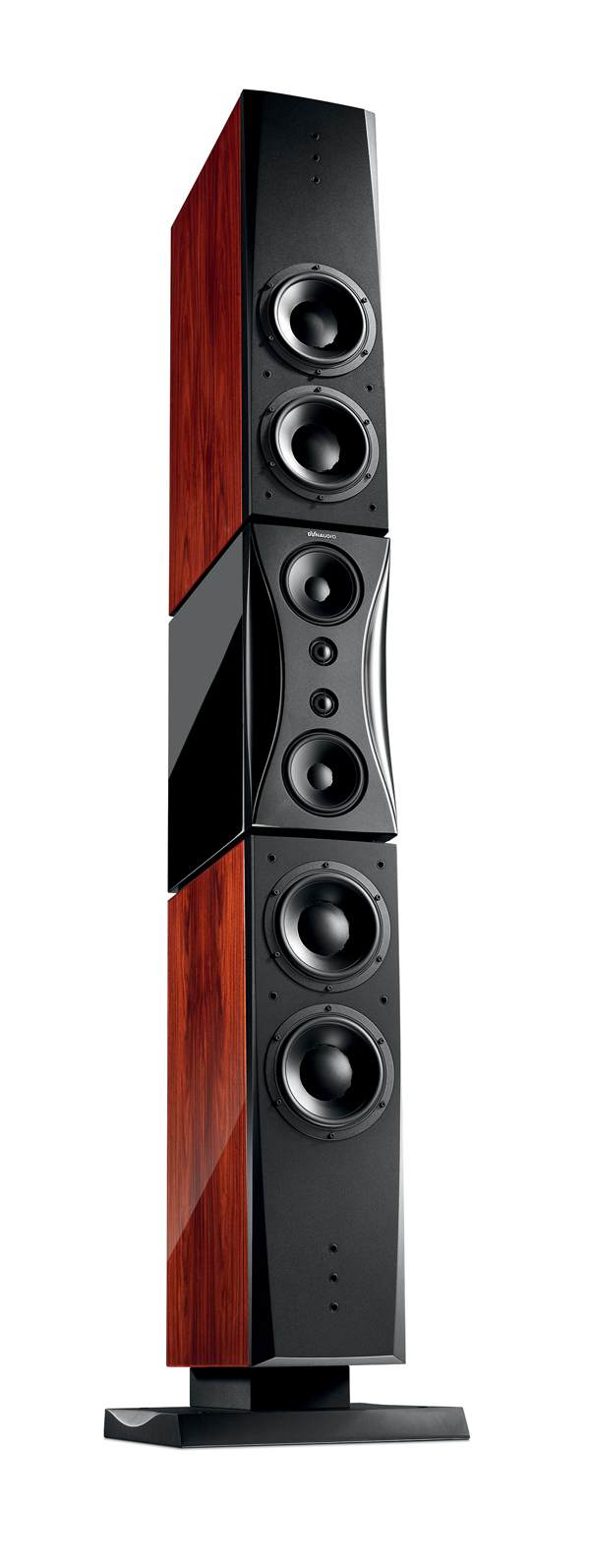 As the sound-level meter bounces above 105 dB during playback of the title track from Iron Maiden’s The Number of the Beast (and I see nods of approval from the non-audiophile buddies present to take this all in), I’m reminded that you need big speakers that can move a substantial amount of air to really enjoy this kind of music. The same can be said for Mahler’s Symphony No. 5 or Deadmau5, if Maiden is not your favorite faire. Dynamic swing and contrast is a big part of recreating the illusion of live music in your listening space, and a large pair of speakers with the appropriate amount of power gets the job done.
As the sound-level meter bounces above 105 dB during playback of the title track from Iron Maiden’s The Number of the Beast (and I see nods of approval from the non-audiophile buddies present to take this all in), I’m reminded that you need big speakers that can move a substantial amount of air to really enjoy this kind of music. The same can be said for Mahler’s Symphony No. 5 or Deadmau5, if Maiden is not your favorite faire. Dynamic swing and contrast is a big part of recreating the illusion of live music in your listening space, and a large pair of speakers with the appropriate amount of power gets the job done.
In the day where $200,000 speakers are becoming more and more common, Dynaudio’s top speaker tips the scale at only $85,000 per pair. Yes, yes, the word only is going to offend a lot of people, but if you happen to be in the market for a six-figure pair of speakers, this level of greatness for $85K is a bargain—it’s all relative. After living with the Evidence Platinums for some time now, I see no need to drop $200K on a pair of Wilson XLFs. And that’s enough money left over to put a new Porsche GT3 in your garage. I know what I’d rather buy.
A number of things make the Evidence Platinum speakers unique. Though they are over 6 feet tall, they carve a very small footprint in your listening room, and thanks to a wide range of wood finishes, along with piano black, they should blend in with any décor. While minimalist yet tasteful grilles are included, the precision craftsmanship of the front sculpted baffles beg them to be left uncovered. Those without large pets or small children will have an easier time leaving the grilles off.
No Limitations
Much like a high-performance supercar, the Evidence Platinums have few limitations. And just as an Aston Martin feels different from a Porsche or a Ferrari, all three cars still provide stellar performance way beyond that of normal transportation. Sticking with the automotive metaphor, the Evidence Platinums remind me of the Audi R8: a new concept that offers similar if not better performance than its contemporaries—and with a bit more style. The Dynaudios are definitely one of the most svelte large speakers around.
Having lived with Dynaudio’s much smaller Confidence C1 Signatures for a few years, I notice a striking parallel between the two speakers. The comparatively diminutive C1s, with their highly optimized front baffle, present a musical picture almost like a point source, while the massive Evidence Platinums simply disappear. In a small room at low volume, with equally high-quality electronics driving the speakers, you’d be hard pressed to tell the difference, other than on the deepest low-frequency excursions.
However, in a larger room, when the sound level comes up and dynamic expectation increases exponentially, the Evidence Platinums justify their price tag. Queuing up the Stereophile test CD reveals solid bass performance at 25 Hz, which is lower than what you’ll need for most program material. Playing Mickey Hart’s “The Eliminators” at high volume confirms the measurement; these speakers can punch you in the chest—hard. The four 7-inch woofers move more air than a single 12-inch unit; yet, because of their small size, they are faster, providing mega bass with maximum tone and definition.
The Evidence Platinums make it a breeze to discern between bass players and their respective styles: The difference between a Hartke bass-guitar amp with aluminum cone drivers and a vintage Ampeg amp with paper cones is now easily apparent. This is what adds so much to the musical experience, making your music so much more immersive. And that’s what you should get when you write the big check.
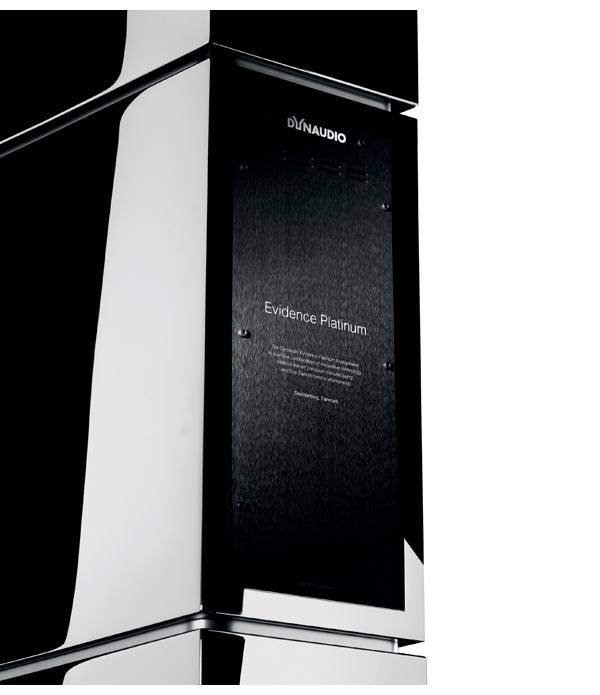
Top-of-the-Line Technology
Dynaudio has left no stone unturned with the Evidence Platinums, taking advantage of the company’s top technological advancements. Relying on silk dome tweeters since the beginning, Dynaudio’s design requires a very labor-intensive process that involves shaping the fine-fabric dome and treating it with a specially formulated coating. The “Precision Coating” used throughout the Platinum range is Dynaudio’s latest refinement to that process. The higher uniformity of the dome’s shape results in a smoother high-frequency response and even more dispersion of mid and high frequencies.
This is clearly evident when comparing female vocals through the Confidence C1s and the Evidence Platinums. A quick spin of Ella and Louis Again uncloaks the difference in the timbre of Ella’s voice, which is already silky smooth and convincing when played through the C1s. By comparison, the Evidence Platinums dematerialize completely, even though they are so much bigger physically. This is truly the magic of these speakers: They vanish like a mini monitor and are transparent like an ESL, yet they have the drive of an enormous cone speaker.
The Evidence Platinums throw a soundstage that is staggeringly wide and deep, but they also get the height aspect right—probably due in part to their physical height. While playing the MoFi copy of Frank Sinatra’s Nice And Easy, I feel as if Sinatra is standing right in front of the speakers, with his voice coming from where his mouth would be.
Custom drivers, check. Precision optimized crossover network, check. Premium electrical and mechanical parts throughout, check. The combination of all these technologies is certainly present in most flagship loudspeakers, but Dynaudio’s DDC (Dynaudio Directivity Control) system is the heart of what makes these speakers perform the way they do.
The combination of the finely shaped front baffle, driver placement and matching the phase response of the individual drivers makes for a more focused dispersion pattern that does not require nearly as much room treatment to sound their best as do many large speaker systems. This is all trickle-down technology from Dynaudio’s professional division, taking advantage of what the company has learned building studio monitors.
Another benefit of this optimization is the ease of setting up the Evidence Platinums. We’ve spent hours (sometimes a day or more) to get reference-caliber speakers to sound their best. The Evidence Platinums sound great right out of their crates before much attention is paid to positioning. About an hour’s worth of fine-tuning brings the speakers to the point where, when Dynaudio USA’s Michael Manousselis stops by to check my work, he merely makes a few fine adjustments and then I’m on my way. These are not finicky speakers by any stretch of the imagination. Even the machined plinth offers a choice of footers for hard and soft surfaces. Once unpackaged, the Evidence Platinums only take a few days of 24/7 play at modest volume to open up and sound their best.
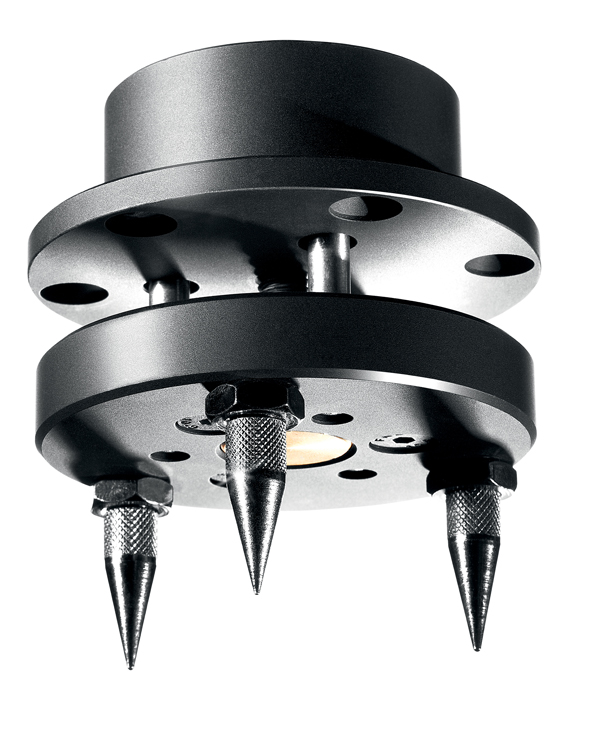 Still Solid, Months Later
Still Solid, Months Later
After listening to these speakers day in and day out for months, I am still amazed and impressed. It’s easy to get carried away with premium speakers after first listen, especially after running through a number of well-recorded audiophile classics.
This is not the case with the Evidence Platinums. I go out of my way to dredge up even the worst-sounding selections in my music collection, and these speakers do a fantastic job with any program material. There is nothing I can throw at them that trips them up. Regardless of the program material and volume level, we simply cannot drive the Evidence Platinums hard enough to invoke listener fatigue.
With a sensitivity rating of 89 dB and a crossover network of 6 dB per octave, the Evidence Platinums are very easy to drive with either tube or solid-state amplification. Even in my 16-by-25-foot listening room, more than adequate volume levels are achieved with the 20-watt-per-channel Nagra 300i integrated amplifier. I would suggest about 100 watts per channel or more for best results, especially if you like to hear your favorite music reproduced loudly.
While these speakers can reproduce some great dynamic swings, they are highly linear, with their massive stereo image still intact, even at very soft volume levels—again, not unlike a great mini monitor. Chrissie Hynde’s signature vibrato comes through clearly on the original Pretenders album. The delicacy present in “Private Life” puts Hynde in the room, right near the center of the listening position.
Coupled to the amazing Pass Labs Xs300 monoblocks, with nearly boundless power on tap, the Dynaudios really come to life. As I blast Lou Reed’s The Creation of the Universe, there isn’t a point at which the wide, vivid stereo image ever collapses—no matter how high the volume. Much like the Focal Maestro Utopia speakers that we just got done auditioning, the Evidence Platinums excel at reproducing large-scale music, especially drums and percussion—and they do so without fatigue.
You Need a Pair
If you are looking for a statement loudspeaker, look no further than the Dynaudio Evidence Platinum. After six months of constant listening (and punishing) on an incredibly wide range of musical program material, I can tell you that there is nothing that the Evidence Platinums can’t handle, if you have enough amplifier power on tap.
Along with their musical performance, the Evidence Platinums offer a level of fit and finish that is in keeping with a speaker of this level. They exude luxury and will be an excellent fit for the world’s finest listening rooms, a fact that can’t be overlooked when spending this kind of money. Lastly, Dynaudio is a major player in the speaker industry, so this is a purchase that can be made with confidence, knowing the company will be around to support these speakers.
With so much capability, the Dynaudio Evidence Platinums should be your last speaker purchase.
Dynaudio Evidence Platinum loudspeakers
MSRP: $85,000 per pair
